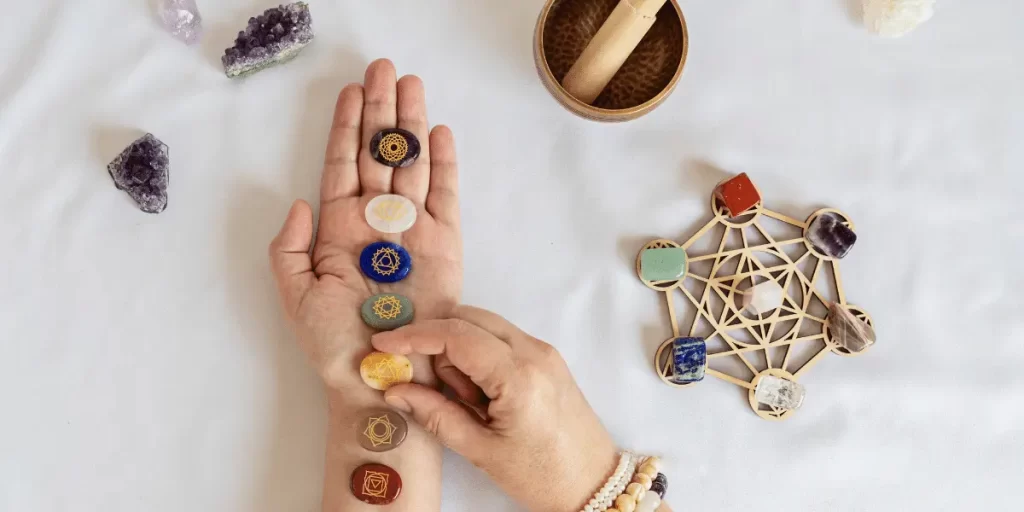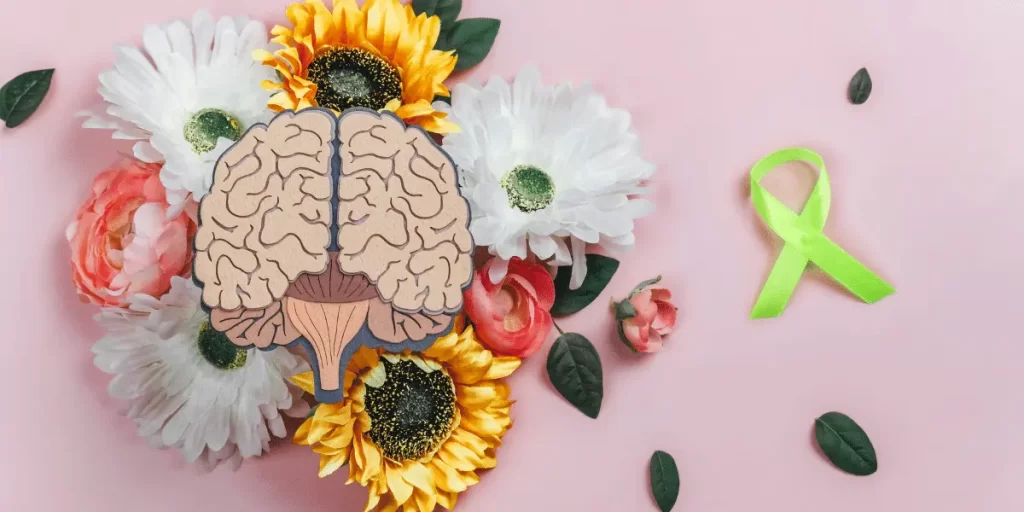As a human, you are a house of emotions. Yes, emotions are part of life – sometimes negative, sometimes positive. Emotions serve to protect us. But sometimes, we experience more of the negative.
This blog post will consider meditation for emotional healing. With this practice, you can control how you feel without letting them define or control you.
The Emotional Toll of Modern Life

We know that modern life is pretty amazing. There are technologies and mind-blowing establishments that has made life easier for everyone. But at the same time, it has brought undue stress to our lives.
First of all, everyone seems to be living fast-paced lives. This makes people tired and drained. Everyone seem to be in a lot of pressure and have so many responsibilities that need to be fulfilled.
Another subtle way modern life is draining is in the use of technology. While this has done some good, it has equally done bad. Trying to stay up-to-date with the latest news, doom scrolling, and spending most of our time on social media, these things take a toll on our emotional and mental health.
Statistics on emotional distress
The recent years have reported an increase in emotional distress (from 25 to 31%). In the United States, emotional distress was also felt. There was a surging rise from 3.6% to 6.4% in just a few years.
A shocking rise of emotional distress from 16.1% to 22.6% within a few years was observed in older adults. In the UK, young adults experience emotional distress from time to time and the number keeps rising.
The impact of unresolved emotional wounds
Unresolved wounds affect our lives in unimaginable ways. Sometimes, the effects keep resounding for many years.
The first impact is on our mental health. Emotional wounds can make us feel depressed and anxious. For instance, a person may suppress his feelings because of societal pressure. As time goes on, this may begin to eat him up and he starts feeling depressed.
Unresolved emotional wounds can affect the way we think, both of ourselves and the world around us. It can also affect our relationships with friends and family. We may begin to doubt them or fear them.
People who have unresolved wounds may begin to seek unhealthy ways to care for themselves. They may begin to self-harm, smoke, drink or do other bad things to relieve themselves. This attitude may even affect their personal and professional growth.
It may also cause them to repeat harmful patterns. To cite an instance, let’s say there’s a person that has undergone an abusive childhood. When he or she grows up, he may begin to attract abusive partners.
When we are wounded, we can refrain from actually achieving our goals. It could cloud our sense of judgment and reasoning. It may make it hard for us to make timely and good decisions.
Meditation for Emotional Healing: An Ancient Remedy

Meditation – we just cannot get enough of it, can we? This ancient remedy is a solution to your challenging emotions. Through this practice, you can gain the strength to face your feelings, heal your traumas, and improve your life.
When you meditate, you are able to navigate self-destructive habits and regulate your very self. It has been practiced for a very long time now and it has come to stay. Many people are finding it beneficial to help them manage their emotions. We know that it can help you do the same.
The science behind meditation and emotional well-being
Meditation has been shown to improve emotional health. It does this by reducing symptoms of depression including PTSD (which is post-traumatic stress disorder). But what is the science behind this?
Think of the brain like a plastic. When you apply heat, you can change the form of the plastic into anything. That is how it is for the brain. When you subject it to activities you do, you develop it more. The brain develops through neural connections which governs emotions and feelings. When you do something repeatedly (like meditation), you strengthen these connections and develop the brain.
Interestingly, meditation can change the brain itself. That is to say, the practice can lead to structural changes in the brain, like an increase in grey matter density and increase in thickness. These changes positively affect areas of the brain that help with emotional regulation.
Meditation practice helps to increase the activity of the default mode network. This network system becomes active when the brain is calm and relaxed. It has been studied that meditators have the ability to activate this network which helps to promote inner peace and relaxation.
Additionally, meditation reduces activity in the sympathetic nervous system. This part is also called your fight-or-flight response. It lowers stress levels and releases good hormones that promote healing.
Different Types of Meditation for Emotional Healing
- Guided Meditation: Here, you can use a meditation teacher, an app, or an audio recording to guide yourself during meditation practice.
- Visualization Meditation: It includes using your imagination, or mind’s eye, to create something pleasant and soothing. When you visualize yourself in a soothing place, you give your body the ability to heal itself.
- Mindfulness meditation: This type makes you aware of the present moment. It also moves you to attend to your emotions and feelings without judgment. It makes you “mindful” rather than mindless.
- Body Scan Meditation: Using this method makes you aware of your physical sensations and their effects. Like the name implies, you scan your body parts thoroughly and pay attention to any sensations felt.
- Focused Attention: This type puts us in control of our emotions when we are focused on a particular object.
Cheers to the 20-Minute Guided Meditation for Healing!

Let’s dive deep as we consider the guided meditations for emotional healing. We will also share some links. You can use these resources and listen while driving.
a step-by-step guide to meditation
- You should start by turning off your phone and other electronic devices. If you will be using your device for the meditation, put it on airplane mode.
- Sit or lie down somewhere comfortable. Feel free to use a chair, the bed, a cushion, or preshrunk cotton.
- Gently close your eyes and breathe naturally.
- It is possible for your mind to wander, even with a guide. You don’t have to stop thinking entirely. Just acknowledge the thought and return to the breath quickly.
Transcript and audio download
Here is a 20-minute guided meditation transcript from the famous Davidji.
Welcome to this new session of guided healing meditation. I’m Davidji, a stress-management expert and your meditation teacher. Consider me a guy, not a guru. This is the part where you find a quiet place to lie or sit.
Close your eyes, take a deep breath, and allow yourself to relax. Let go of any stress in your body. Learn to focus on your breath.
Continue taking in slow, deep breaths. Exhale through your mouth. As you do, imagine your stress and negative emotions leaving your body. Now, repeat after me, “I release this negative energy; I let it go”
Imagine a bright light appearing before you (this light signifies calmness and healing). Imagine yourself walking through the light, enhancing your healing with each step. See yourself completely immersed in it and let the light wash over you. Say after me, “I am healed and I am calm”.
[After few minutes]
Slowly breathe in and open your eyes.
It’s now time to focus on the sensations in your body. Stretch your arms and legs and observe any rising emotions. Return to your day and continue carrying the sense of calmness with you.
You can listen to or download some of his audio files here:
In addition, you can listen to podcasts written and read by Sara Raymond Music. Sara’s mindful movement is happy to provide these meditations that would help you find new beginnings.
Here are links to some of the audio files:
You can also listen to or download files by Christopher Lloyd Clarke here:
Please like and subscribe to their YouTube channels.
Emotional Awareness – Your Way to Healing

Have you ever wondered why you are triggered negatively or positively when something happens? The answer lies in your emotional awareness. What this means is you understand what triggers you and you determine your reaction.
Emotional awareness is critical. It can reveal truths about us that we may find it hard to accept. Are you ready to dig in?
Understanding emotions and their root causes
Emotions do not have a one-way definition. It is trickery. It is not always easy to label a feeling. If you label a feeling as anger on the surface, deep down it could be resentment or annoyance. If you label an emotion as sadness, it could be something else entirely when you take a close look at it.
However, emotions are a combination of physiological responses, subjective impression and personal expressions. What makes you happy can be different from what makes the other person happy. Your emotion depends on your perception, resilience and your coping mechanisms.
Emotions are often caused by thoughts. Two people may have different emotions on the same situation because they have different thoughts. Sometimes, though, the brain can trigger emotions unconsciously, leaving you confused.
Understanding emotions can help you trust others and develop good relationships. On the other hand, not understanding your emotions may lower your confidence and worth. You may even begin to find some sort of relief by indulging in things you shouldn’t.
The role of mindfulness in emotional healing
Mindfulness is a useful practice that lets others cultivate respect for their emotions. It lets them accept and embrace them rather than avoid them. This practice also helps individuals override body memory associated with traumatic experiences. Thus, they are able to understand their motivations and realize good emotions like compassion and kindness.
Furthermore, it allows individuals to develop healthy coping skills to deal with bad habits like addiction. It also helps you sustain long-term recovery. So, you won’t easily get a relapse when you practice mindfulness.
Overcoming Toxic Emotions: Real-Life Success Stories

If you encounter negative emotions, you are not alone. Every other person on earth goes through dark times that frustrate them. While many have sought out different methods to heal, some have stuck to meditation. For them, meditation has changed their lives for the better and they are not going back.
Now, we will be sharing life stories of those who used meditation for emotional healing. In case you are confused, let these stories inspire you to do the next best thing.
Testimonials from individuals who used meditation for emotional healing
Mark, Business Consultant – “Before I started meditation, I was at my lowest moment. The moments which you will say are the dark times in my life. When I began to meditate, I found out that I regained my personal strength. I gained control and I found myself. As a matter of fact, the way I interact with others has changed. I hear friends giving others a nice description of me. They say I’m calm, relaxed, and generous (I laugh when I hear these comments)”.
Zoe, Real Estate – “I was diagnosed with profound health issues and this left me anxious and depressed. I was constantly having mood swings and it was emotionally draining. I decided to try meditation because I have heard that it works wonders. Well, it worked wonders for me. Meditation has made me calmer than before.”
Nikki, Sales Manager – I have been overwhelmed with grief since I lost my dad. My life was unbalanced and I felt like dying. I even become angry. I sought out meditation as something that could help. I’m glad I used it because it enabled me to regain balance. It healed me and cleared my mind of negative thoughts. I have now developed forgiveness and acceptance”.
How to Successfully Process Your Emotional Healing Journey

When you think of enjoying the process of your emotional healing journey, it will mean well for you. Let’s briefly read through the following tips that can help.
Creating a conducive environment for meditation
Consider this as your starting point. But the question is, what makes a meditation room conducive? No, it doesn’t have to be fancy. You can literally use it anywhere as long as there are no distractions. Put off unnecessary things from your space. If you are using indoors, you may want to adjust the lighting to suit you. If you want to use scents or sound, no problem. Just do it your way and go with the flow.
Incorporating meditation into your daily routine
An easier way of successfully meditating is adding it to your daily activities. In between your eating, exercising, brushing or bathing, squeeze in the time to meditate. This way, you will be consistent.
Using meditation for emotional healing works. However, don’t use or view it as a magic pill. You need to give it time for it to take full course. Trust the process and when you do, you will be extremely thankful.
FAQ’s:
Misconception 1: meditation means clearing my mind.
Fact: That’s not the meaning, it is more of getting good at life and being the best version of yourself.
Misconception 2: I can’t face my feelings
Fact: meditation will not make you numb or insensitive to emotional pain. It will force you through it and help you build resilience.
Subscribe to YouTube channels or download apps like Insight Timer or Headspace from Google.
Yes, it regulates mood and emotions, thereby healing you.
You can do so, but remember that it is not a magic pill.
Meditation and mindfulness exercises can be used.
Accept your emotions instead of avoiding them. Try to identify and understand the trigger.
i. personality change ii. agitation or anger iii. withdrawal or isolation; iv. poor self-care; v. feelings of hopelessness
Meditation provides emotional, physical, and spiritual healing.
Yes, studies how meditation can reverse and reshape the brain.



